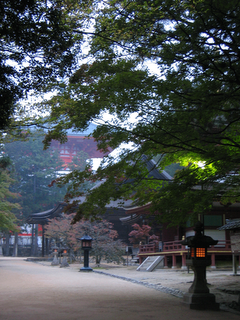
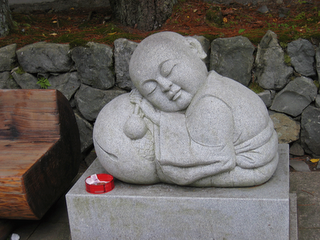
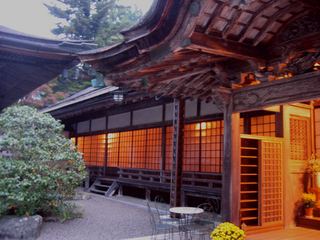
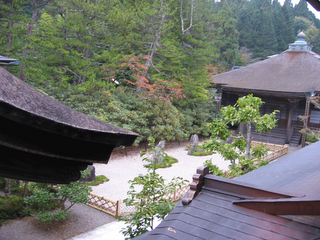
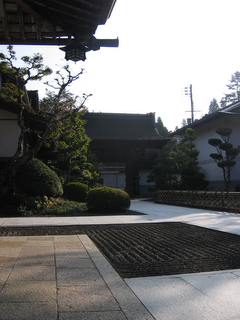
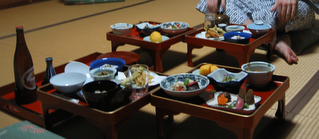
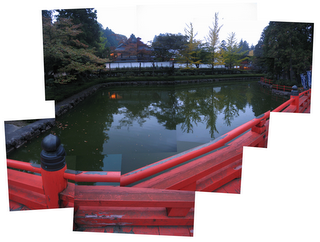
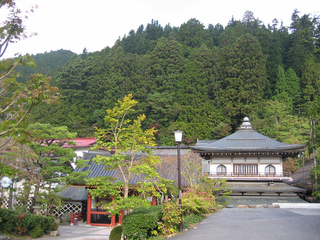
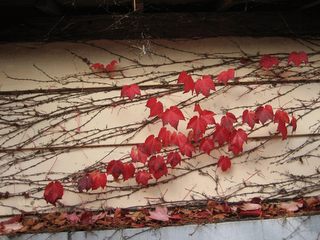
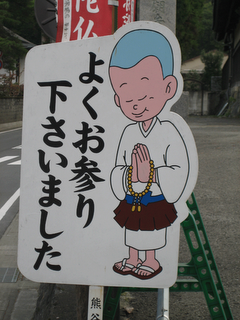
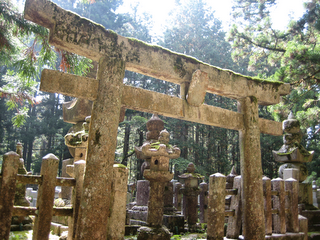
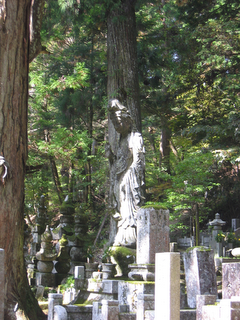
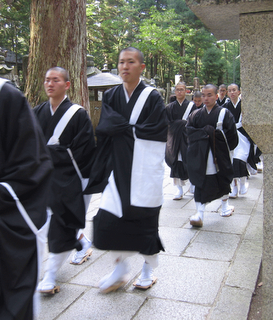
We left the coast and began our dizzying journey to Koya-san, a mountaintop monastic complex that is the center of Shingon Buddhism. It was several hours away by train, then cable car, then bus, then by foot. Hundreds of temples are nestled here and thousands of shaven head monks call Koya-san home. There are no hotels here so visitors stay at "shukubo" (temple lodgings). A young monk welcomed us to his remote, quiet temple, and in perfect English, explained the process of staying at the shukubo. We were to be inside of the temple gates by 6pm, eat our dinner (entirely prepared by the monks with no meat, fish, garlic, or onions) in our room, and we were to meet in the temple hall at 6.30am for morning prayer the next morning.
Our traditional Japanese room was sparsely decorated- tatami with a low table and some cushions, a view of a very serene rock garden, and a TV (I know, so random). The shojin ryori (vegetarian dinner) was interesting but oishii (delicious) and consisted of many kinds of gluten and tofu, roots and vegetables, tempura, soup, and fruit.
The next morning, we shuffled into the temple hall for the morning prayer and sat "seza" style, on our knees with our toes tucked beneath us. The room was dimly lit with candles and lanterns, and the early morning light filtered through the intricate dark wood screens. Three monks (one of whom was the one who greeted us the day before) in saffron colored robes began chanting ancient Buddhist scriptures and I got lost in the deep mysterious droning... the gilded shrines seemed to come alive with the flickering light and the air was heavy and thick with incense. This calmness lasted only a few minutes when I noticed the aching feeling of my legs. About 3 minutes later, I couldn't even hear the monks as my legs screamed for freedom. I finally unfolded my throbbing legs and had to sit cross-legged (considered SOOOO rude, especially for a woman!) but I couldn't do anything about it.
When we came back to our room, our futons and bedding had already been folded and taken away (I always wonder- what if I wanted to take a nap?) and we sat down to another traditional vegetarian breakfast (soup, rice, gluten? tofu? vegetables, nori, and tea). With such an early start and a hearty breakfast, we headed out to explore Koya San's expansive ancient cemetery. The leaves of the maple trees were tinged with red and the air got cooler as we neared the shade of the towering cedar trees. In the cemetry, the sunlight streamed through the trees and we followed the stone path lined with thousands of moss-covered stone pagodas, statues, tombs, and graves. There are like 500,000 tombs in the mountain precincts, the oldest dating to the 9th century. There were also many small statues with "bibs" which represent babies who have died.The idea behind all the tombs is that anyone buried there (if only a lock of hair or a tooth or two) is in the pole position for the return of the Buddha of the Future. At one point, a troop of monks in black and white robes marched past us, followed by several packs of smiling uniformed high school students, each calling out a cheerful "ohayo gozaimasu!!" (good morning!!) It must be the fresh mountain air- I can barely get my students to mutter a "hello" or a grunt first thing in the morning!

No comments:
Post a Comment